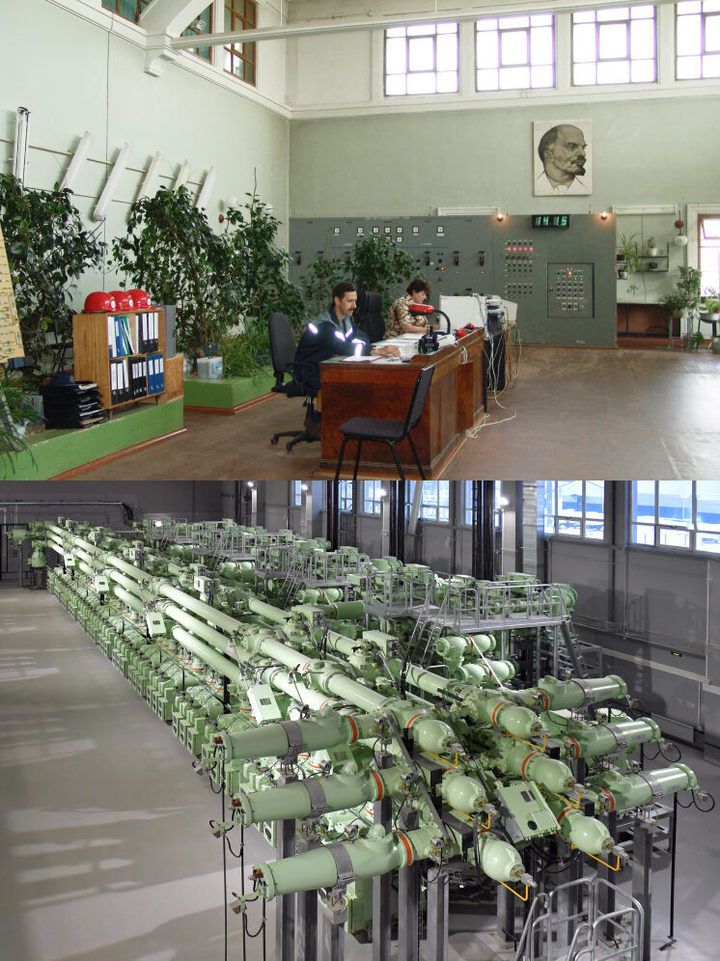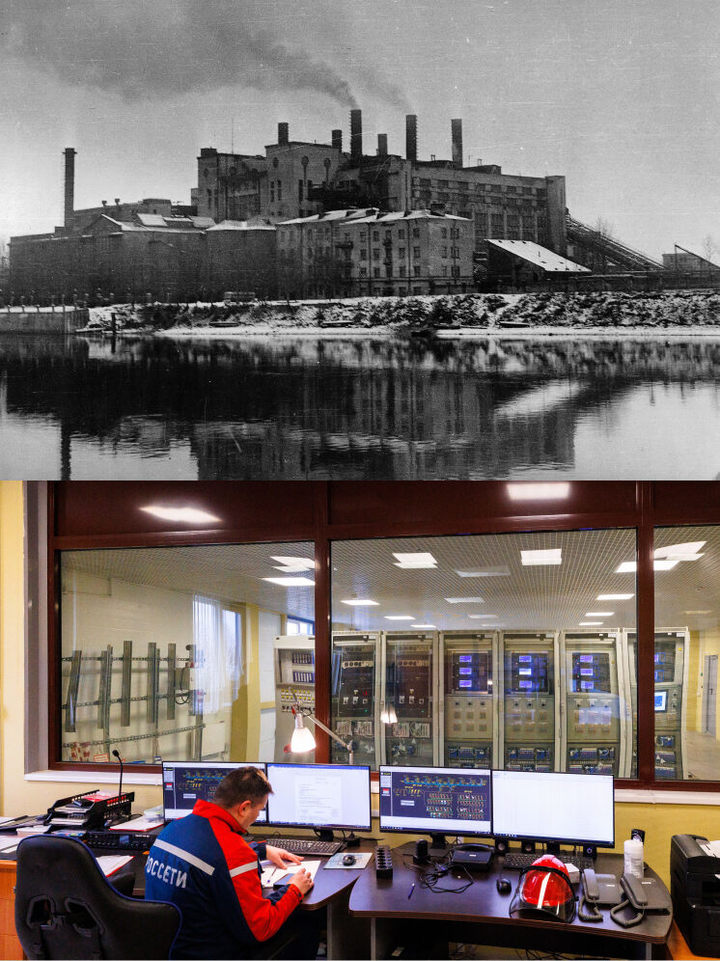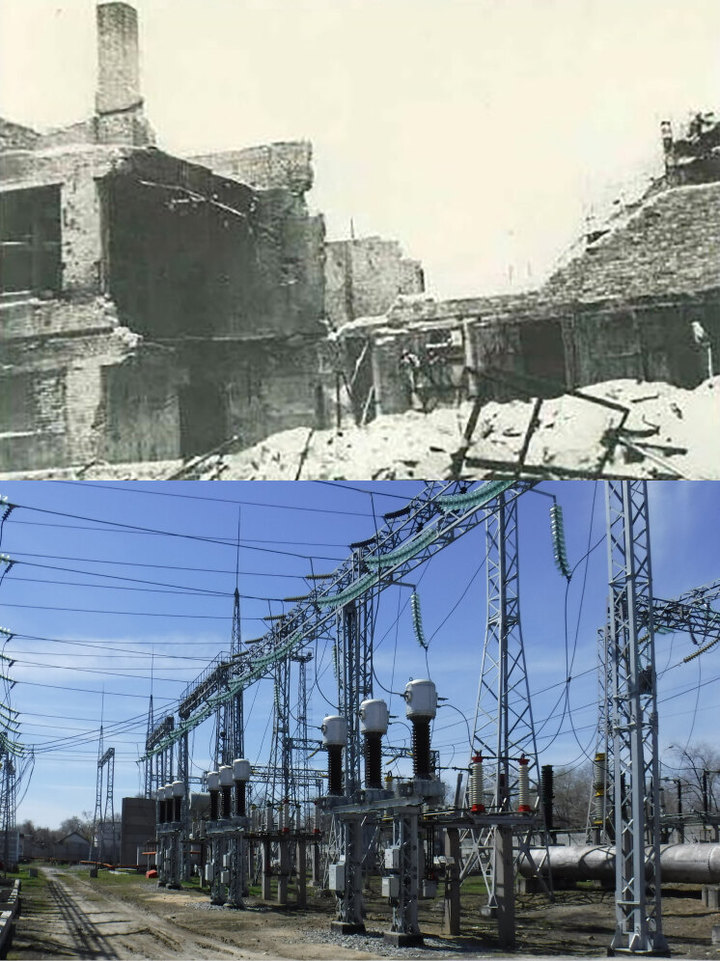Energy for two centuries – MK
[ad_1]
Substation 220 kV “Temp”: energy for the Canal named after. Moscow and science city
Moscow region. Built in 1937, reconstructed in 2022.

One of the oldest operating main substations in the Moscow region was built for the Moscow-Volga Canal (now the Moscow Canal) – it supplied power to the locks even during the Great Patriotic War. In the 1970s, after the Konakovo State District Power Plant was commissioned in the neighboring Tver region, the voltage class of the substation was increased from 110 kV to 220 kV.
In 2022, a comprehensive reconstruction of the substation was completed, which made it possible to transform “Temp” into a “closed type” facility. Highly reliable complete gas-insulated switchgears have been introduced here. This is one of the most effective solutions today, ensuring high fire safety of the facility and reducing the impact on the environment.
The capacity of the updated substation has almost doubled – from 250 to 450 MVA, which will allow connecting new consumers to it. This is important because one of the most famous science cities in Russia, Dubna, is located nearby.
330 kV substation “Mashuk”: energy for Caucasian health resorts
Pyatigorsk Built in 1936, reconstructed in 2021.

The oldest power grid facility in the North Caucasus was built according to the GOELRO plan. The first energy came to the substation from two hydroelectric power stations – Baksan and White Coal.
In the 1940s, the substation was expanded and a 110 kV open switchgear was built. It was the main feeding center of the Stavropol region. Moreover, already in the 1960s, the facility was again reconstructed, raising its voltage class to ultra-high – 330 kV.
The equipment has been updated over time, with the latest upgrade completed in 2021. Thanks to the installation of new power transformers, the power increased to 560 MVA. Today, the substation provides power supply to the resort cities: Essentuki, Zheleznovodsk, Pyatigorsk, Kislovodsk, and participates in the distribution of energy from the Nevinnomyssk State District Power Plant and the Kuban hydroelectric power station cascade. It also feeds Mineralnye Vody International Airport.
110 kV substation “Red October”: energy for Leningrad
Saint Petersburg. Built in 1922 (as a thermal power plant), reconstructed in 2022.

In the Northern capital there are several operating energy facilities that were introduced back in the days of GOELRO: substations “Varshavskaya” (formerly “Red Triangle”), “Volkhov-Petrogradskaya”, “Volkhov-Severnaya”, “Plant Ilyich”. A unique power supply center is “Red October” – originally it was the “Utkina Zavod” thermal power plant.
It was built by a Belgian company in 1914–1916, but due to the war and revolution the work was not completed. Subsequently, the thermal power plant was completed according to Lenin’s electrification plan – and it became the first facility built within the framework of GOELRO. She worked on peat.
During the siege of Leningrad, fuel became scarce. The thermal power plant, the only one in the city, was able to run on low-quality milled peat, thanks to which the tram network was revived. German troops disabled equipment more than once, but Leningrad power engineers restored the operation of Red October every time.
After the war, the thermal power plant was restored and then modernized. It provided energy to residential buildings and industrial facilities in the Nevsky district. In 2010, the power plant completed its work – consumers were connected to the Pravoberezhnaya CHPP built not far from Oktyabr. And the open switchgear was reconstructed by Rosseti Lenenergo. SF6 gas equipment was installed, a relay protection and automation system was installed. After a large-scale reconstruction, the power center became remote-controlled in accordance with modern requirements.
220 kV substation “Severnaya”: energy for T-34 and Katyusha
Volgograd. Built in 1931, reconstructed in 2015.

The Severnaya substation ensured the distribution of electricity from the Stalingrad State District Power Plant. At that time, the power of Severnaya was 15 MVA – now this would be enough for several blocks of residential development, but not for large industries.
And at that time, among the enterprises to which energy was transferred from the substation was the Stalingrad Tractor Plant, where during the Great Patriotic War the legendary T-34 tanks and artillery tractors, on which the equally famous Katyusha mortar was installed, were produced and repaired.
Even on the most difficult days, the substation continued to operate, despite constant bombing and shelling. Many of its employees died. Only on September 13, 1942, when the fighting was already taking place directly on the territory of the tractor plant, the power facility was disconnected from the network. But five months after the end of the Battle of Stalingrad, his work was resumed.
In the post-war years, Severnaya played a big role in the restoration of the city. Its power increased to 263 MVA, and the voltage class was increased from 110 kV to 220 kV. Advanced equipment for its time was actively introduced, including the development of new devices at that time – differential-phase protection of lines, which acted quickly and more reliably protected equipment from short circuits.
The last reconstruction was carried out in 2014–2015, as a result of which the portals were replaced, service buildings were rebuilt, and modern relay protection and automation devices were installed. Among the large consumers are the metallurgical plant, enterprises of the military-industrial complex and, of course, the Volgograd Tractor Plant, which is still operating.
110 kV substation “Bagrationovsk”: energy for the western gates of Russia
Kaliningrad region. Built in 1977, reconstructed in 2021

Five of the most important 110 kV substations in the Kaliningrad region – Ladushkin, Slavsk, Polessk, Ozerki and Bagrationovsk – were modernized and put into operation simultaneously in 2021. But in fact, their story began much earlier.
The region’s energy sector was almost completely destroyed during the Great Patriotic War. However, already on November 25, 1945, the first electrical installations were put into operation at the local State District Power Plant-1, thanks to which the city’s most important facilities were provided with electricity.
Since the 1960s, the regional power grid has been built at a rapid pace, its scale increasing exponentially over several decades. The Bagrationovsk substation, for example, was built to supply power to the region’s southernmost city and growing industry.
During the latest reconstruction, modern power and switching equipment was installed at all five power facilities. “Smart” control and electricity metering systems and microprocessor relay protection were installed. This is part of a large-scale program to modernize power grids, which was necessary, among other things, for reliable power supply to the region in the “island” mode. In just five years, the Rosseti Yantar company commissioned about 1.5 thousand km of power lines and substations with a total capacity of 346 MVA.
Photo: Press service of PJSC Rosseti
[ad_2]
Source link








